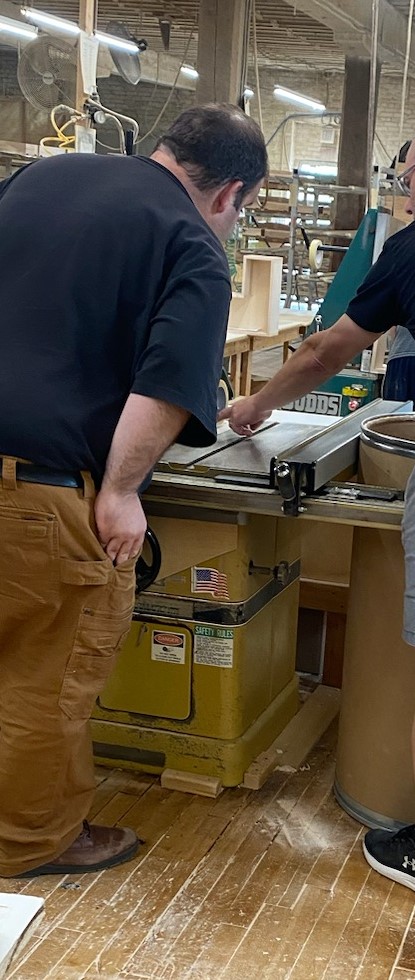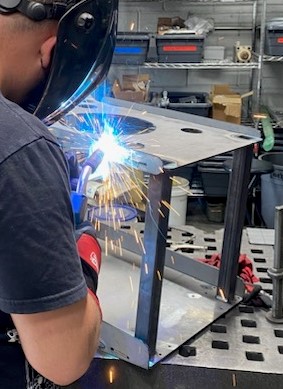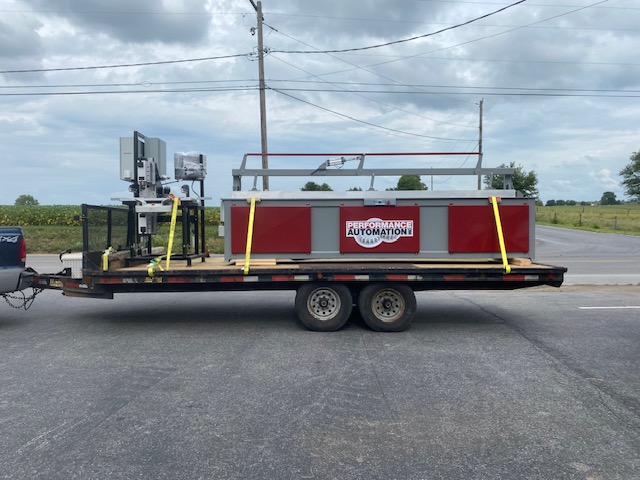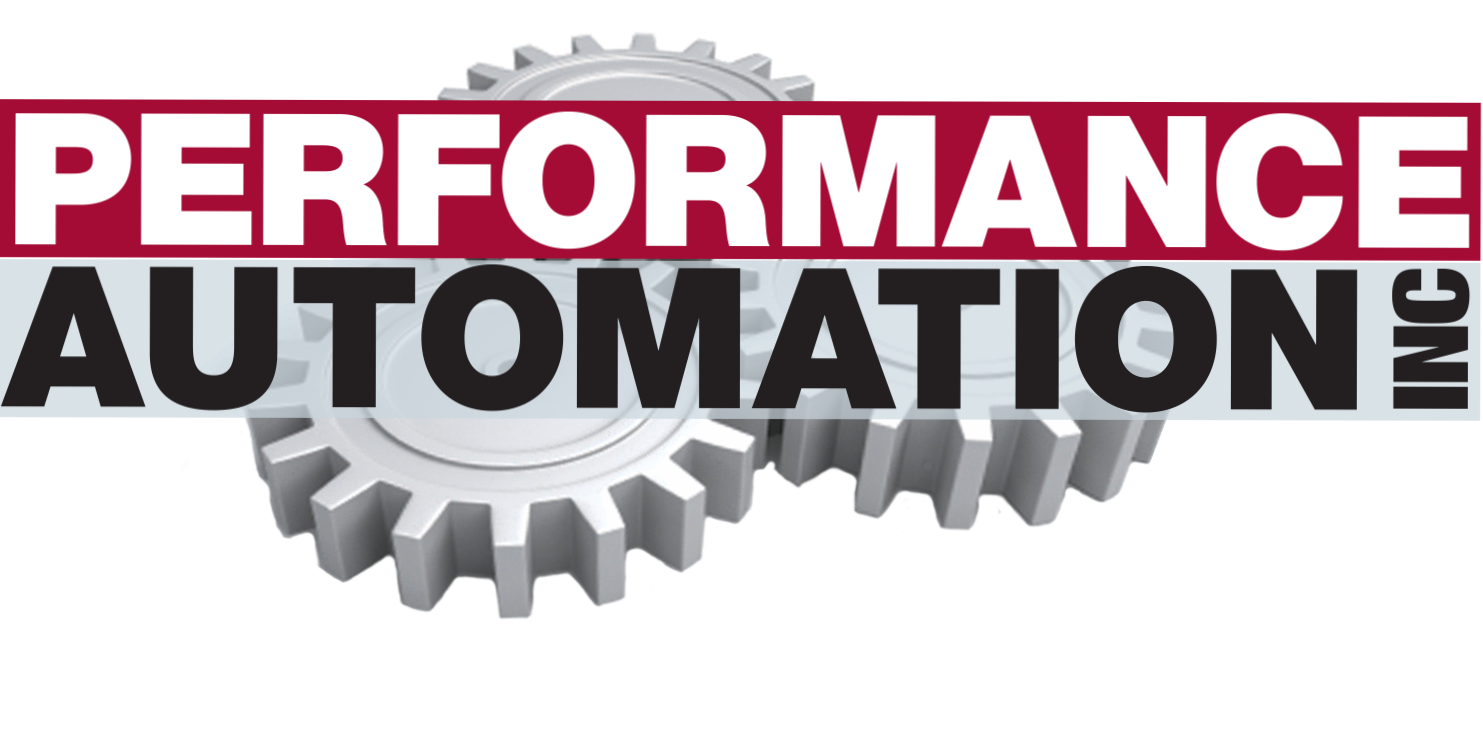Our Process
How we improve your efficiency.
Overview
How We Build Custom Machines
For many manufacturers, there comes a time when off-the-shelf machinery simply won’t do. Sometimes it’s a new product that requires new machinery custom designed and fabricated for a product manufacturing or processing need. Other times, the existing machinery simply needs a modification such as
- Additional production or output
- Additional robotic integration
- Upgrades to improve safety
Often, a manufacturer needs to produce a new product, increase their current production rate, decrease downtime, increase throughput or increase the machine’s accuracy. If the current (or nonexistent) machinery doesn’t have the functionality required or is not optimized for operation, then a custom machine build or retrofit may be necessary.
Traditionally, the process for exploring a custom machine build involves the client approaching a machine designer, explaining what they need, and receiving a quote for delivery of the finished product. However, that traditional approach mixes several key steps in a machine design-build project that tend to unnecessarily cost the client time and money.
By only expending a small investment for Phase One’s conceptual design, we give the client control of fund expenditure and the design itself, rather than being locked in to a design and a firm bid price, which often includes overpaying for unnecessary contingency.
Click on a card to learn more about each phase!
PHASE 1
Project Definition
Phase One is the initial project-definition phase of the process. During this phase, Performance Automation works together with the client to define the custom machine requirements, after which our team prepares conceptual layout drawings and a functional specification for the client to review. Once the client accepts a conceptual layout and functional specification, Performance Automation provides a budgetary cost estimate and preliminary project schedule for the complete project. The schedule provides a timeline for the design, fabrication and installation phases of the project. An estimate of the time required for start-up, commissioning and operator training is also included when necessary. In addition to providing the cost estimate, we also provide a proposal for the detailed mechanical and electrical engineering (Phase Two) based on the client-approved conceptual layout and functional specification.
By only expending a small investment for Phase One’s conceptual design, we give the client control of fund expenditure and the design itself, rather than being locked in to a design and a firm bid price, which often includes overpaying for unnecessary contingency.


PHASE 2
Engineering Design
Phase Two is the detailed engineering design phase of the process. Our engineers prepare the mechanical and electrical assemblies along with bills of material and detailed fabrication drawings based off of the approved conceptual layout and functional specification from Phase One of the process. Throughout the design process, we review the drawings and design with the client to ensure project alignment. Performance Automation will ensure the design is acceptable to the client prior to release for procurement and fabrication in order to minimize any changes and additional client expenditures during fabrication. During this phase, we also refine and update the functional specification based upon the mechanical and electrical designs, as well as input from the PLC and HMI programmers and most importantly, the client.
Upon completion of Phase Two of the process, a firm quote is provided to the client for the procurement, fabrication and programming of the custom machine along with a budgetary cost estimate for the installation and startup of the custom machine at the client’s site.
PHASE 3
The Build
Phase Three is the procurement, fabrication, and machine assembly of the custom machine based upon the mechanical and electrical designs developed in Phase Two. During this phase, we develop PLC and HMI application programs for controlling the custom machine using the mechanical and electrical designs and the revised functional specification prepared during Phase Two of the process. A machine runoff and factory acceptance test with the client is a requirement of the process. Upon acceptance of the custom machine, we provide the client a cost estimate for the installation, startup, and commissioning of the custom machine. Performance Automation can also provide an estimate for operator and maintenance personnel training.


PHASE 4
Installation and Startup
Phase Four is the installation, startup, and commissioning phase of the process. Mechanical and electrical installation services can be provided by Performance Automation or by the client, allowing flexibility in scope and client costs. Performance Automation provides installation assistance as well as startup, commissioning, and training, if the client desires. A documentation package can be provided upon acceptance of the machine by the client. The documentation package includes drawing packages in PDF and native format, PLC / HMI application programs, recommended spare parts lists and operator manuals.
Conclusion: We Help You Get Better Results
The unique aspect of this four-phased approach is the client’s ability to review the results upon completion of each phase and determine a path forward for the project. By involving the client in every step of the process, we are able to mitigate any problems that may arise, allow for design flexibility, minimize the cost of changes and adjust the specifications to the changing client needs. The result is a high-performance machine that is built exactly to the clients specifications.
At Performance Automation, we are focused on clients’ needs and providing solutions to their problems. This four-phased approach allows us to fulfill this commitment and ultimately create better, safer, and more efficient designs.
At Performance Automation, we are focused on clients’ needs and providing solutions to their problems. This four-phased approach allows us to fulfill this commitment and ultimately create better, safer, and more efficient designs.
